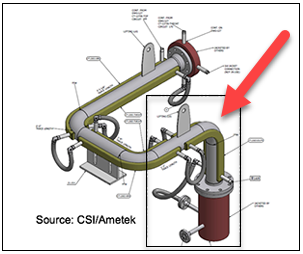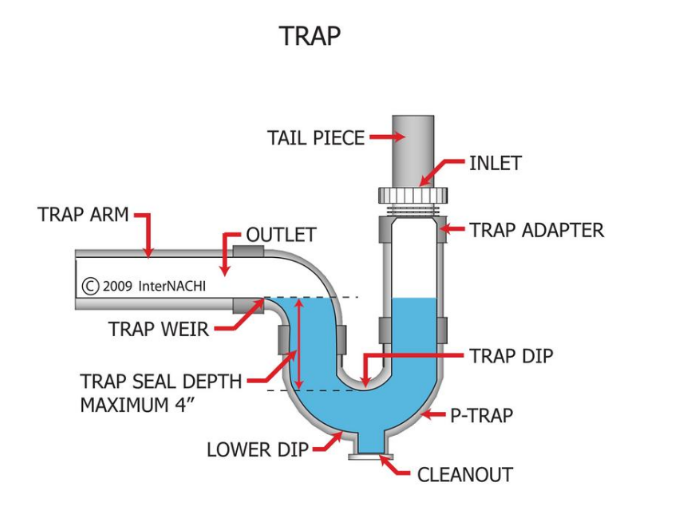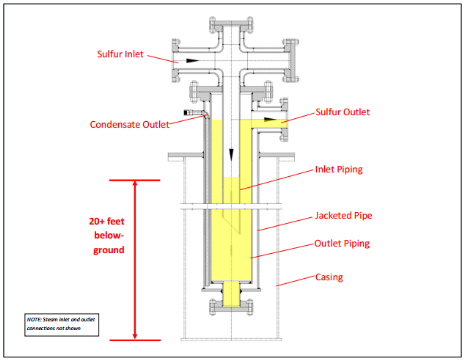The Claus unit converts hydrogen sulfide into liquid sulfur. This liquid sulfur is stored temporarily in a sulfur pit. The Claus process has multiple condensers because the conversion to liquid sulfur is equilibrium-limited. The main purpose for sulfur sealing is preventing hydrogen sulfide leaks to the atmosphere. Let’s examine the in-ground sulfur sealing.

Figure 1: Image of a seal leg.

Figure 2: Cross sectional image of an elbow trap in a sink.

Figure 3: Cross-section image of a seal leg.
In-ground sulfur sealing, or commonly known as Seal legs, is traditionally what has been in use for refineries for over 50 years. Referring to figure 2 the way Seal legs work is very similar an elbow in the sinks, and toilets, they maintain a liquid barrier between the gases in the sewer, and the house. Elbow traps operate at atmospheric pressure, this is where the similarity ends, because Seal legs need to compensate for the Claus units pressure. Figure 3 shows the inlet liquid level being lower than the outlet liquid level; this is because of the sulfur inlet pressure being greater than the sulfur outlet pressure. Though the Seal leg serves its purpose, it does come with a variety of issues that we are going to examine.

Figure 4: Inlet pressure spike effect
Seal legs can run into numerous issues:
- Figure 4 demonstrates one of the problems that seal legs can face. If the Claus unit experiences pressure spikes great enough to force the fluid out of the seal leg, it would cause the gases to bypass the Claus unit and vent to atmosphere. This failure only occurs if cost cutting measures were taken during the design phase of the claus unit.
- If there is an issue with the steam jacketing, a variety of issues can show up including condensation, sulfur freezing causing plugging, and increased corrosion issues.
- Blocking of the seal leg due to debris piling up at the bottom point of the seal leg choking off the seal leg causes flooding back into the condenser.Common blocking material would include Sulcrete, and solid Sulfur. Other debris material can include the catalyst material, refractory dust, and soot.
- Start-up can be especially prone to blocking because the catalytic material has not settled yet. It is important to remove the dust from new catalytic material using purge techniques, because if the catalytic dust is not removed it can contribute to the formation of Sulcrete.
References:
Willingham, T. C. (n.d.). In-Ground Versus Above-Ground Sulfur Sealing – An industry Survey. Retrieved February 28, 2017, from http://www.csiheat.com/Uploads/files/In-ground%20vs%20Above-ground%20Sulfur%20Sealing–An%20Industry%20Survey.pdf
To learn about sulfur sealing or sulfur recovery, attend sulfur training, go to a RefComm® Sulfur Conference, or get sulfur consulting,







Leave a Reply
You must be logged in to post a comment.